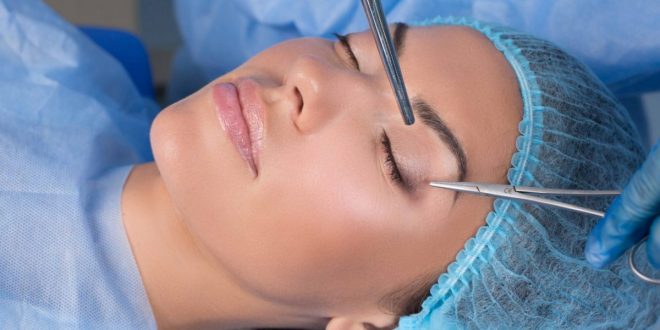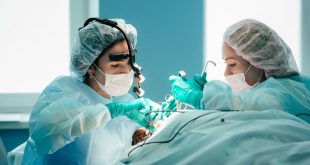Blepharoplasty, also known as eyelid surgery, is a cosmetic surgical procedure that removes pouches under the eyes, excess folds of skin, fat deposits and excess tissue or muscles from the eyelids.
Eyelid surgery improves appearance, vision or both and usually produces a satisfactory effect. Sometimes, eyelid surgery is accompanied by brow lift or forehead lift to produce a more rested, youthful appearance of the upper face.
Eyelid surgery can be performed on one eyelid or both. Compare to other reconstructive surgeries, eyelid surgery yields the most satisfying results due to short recovery time and long-lasting results.
Also Known As: Blepharoplasty
Benefits of Eyelid Surgery
Eyelid surgery can benefit patients (on their early 20s) with excess skin and fat on their eyelids, which were inborn or developed during childhood or adolescence.
Eyelid surgery is also beneficial to patients with eyelid changes resulting from natural aging. These patients usually undergo eyelid surgery as early as their 30s until their 80s.
Blepharoplasty also offers functional benefits for patients with extreme hooding of the upper eyelids. Severe hooding obstructs peripheral vision and reduces the range of upward vision. Eyelid surgery can correct this condition and restore normal vision range.
In order to undergo eyelid surgery, a patient should have good health, good muscle tone of eyes, healthy skin without sun damage and an understanding that the procedure will not correct wrinkles under eyes, dark circles, sagging eyebrows, crow’s feet or eliminate future signs of aging.
The Eyelid Surgery Procedure
Eyelid Surgery is usually performed under local anesthesia in a matter of one or three hours. When local anesthesia is administered, the patient will be sedated, yet partially awake throughout the surgery. On the other hand, when general anesthesia is used, the patient will sleep through the entire procedure.
Eyelid surgery usually starts on the upper eyelids first and then the lower eyelids come next. It can performed on the upper eyelid or lower eyelid alone, or both.
During the eyelid surgery, the doctor makes an incision above and below the eye tissue. Since this incision follows the natural folds of the eye, the fatty tissue and excess muscle can be separated easily. Then, the fat is removed and the sagging skin and muscles are cut out.
For upper eyelid surgery, the incisions are made in the natural skin crease of the upper eyelid. Fatty tissues and excess skin are removed, while orbital septum and muscles are tightened for correction of droopy eyelids. The incisions are then closed.
For lower eyelid surgery, the fat deposits are removed, while the loose skin is tightened. The incisions are made just along the lower eyelash line and extended beyond the eye. Excess muscles, skin and fat are excised and the incision is closed.
Transconjuctival eyelid surgery is a procedure where the excess fat is removed, but the skin is not tightened. In this process, the incision is made inside the patient’s lower eyelid, which leaves no visible scars. Excess muscles and fat are removed, and the incision is closed.
Recovery After Eyelid Surgery Procedure
After eyelid surgery, the recovery time can take anywhere from 2 weeks to 1 month, while the complete healing process last up to 6 months.
Immediately after the eyelid surgery, the eyes may feel tight with mild discomfort that lasts for 1 to 3 days. It will be bruised and swollen for five days. To reduce these conditions, keep your head elevated and apply cold compress for the first 48 hours. In order to prevent bleeding complications, your blood pressure is monitored. The eyes will be lubricated, which may blur your vision.
Within one to two weeks after the eyelid surgery, the swelling and bruising will fade gradually. However, your eyes will be sensitive to light and may experience itching, tearing, burning or dryness.
The Results
Since the eyelid surgery removes excess skin and fat from the eyelids, bags below the eyes and upper eyelid puffiness is also reduced or even removed.
Eyelid surgery provides satisfactory results, which are long lasting and permanent, enabling the patient to have a younger, rested and alert look. However, individual lifestyle and hereditary factors may influence the duration of results.
Surgical facility And Cost
The cost of eyelid surgery largely depends on the condition and complexity of the problem. It can also be determined by the qualifications of surgeon, geographic location and rates of the facility. It is also divided into four fees – procedure fee, surgeon fee, anesthesiologist fee and facility fee.
The average total cost of both the upper and lower lid is about $4,000, while surgeon fees start at $2,500, anesthesiologist fees are around $700.
When a patient benefits from only a lower or upper eyelid, this total cost is reduced accordingly. Lower lid surgery will cost around $2,500 with a $1,600 surgeon fee, $400 anesthesiologist fee and $500 (or up) facility fee. Upper eyelid surgery will cost about $2,000 with a $1,200 surgeon fee, $400 anesthesiologist fee and $500 (or up) facility fee.
However, it can be qualified when the cases are from injuries, birth deformities or diseases.
Side Effects, Risks, Complications and Contradictions
Although eyelid surgery rarely produces side effects, some complications can result in prolonged healing. These include painful scars, change or loss of vision, unpleasant-looking scars, and temporary or permanent requirement of eye drops.
Eyelid surgery also involves major health risks such as blindness, blurred vision, corneal abrasion, double vision, dry eye syndrome, milia (tiny skin cysts from scar lines), retrobulbar hematoma and permanent surgical scars.
 Lesbian, Gay, Bisexual, Transgender & Intersex News Lesbian News, Gay News, Bisexual News, Transgender News, Intersex News, LGBTI News
Lesbian, Gay, Bisexual, Transgender & Intersex News Lesbian News, Gay News, Bisexual News, Transgender News, Intersex News, LGBTI News




